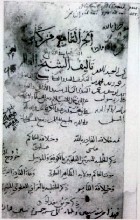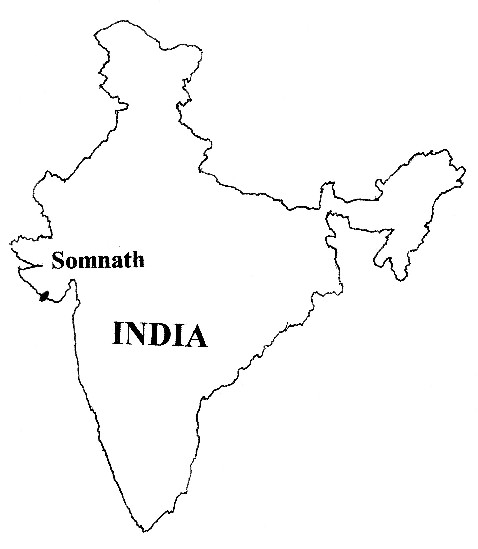
To next page
Ibn Al Athir : Al Kamil fi al-Taritk (1231)
(The complete Accounts of History) in Syria with Saladin
--------------------------------------------
He mentions that Mahmud's purpose of breaking the idol of Somanatha was to demonstrate that the Hindu claim to its being invincible was false. He also mentions that it is supposed to have healing qualities.
The temple was built on a foundation of stone and was supported by 56 columns of teak imported from Africa. The temple (he says ) houses the greatest of idols which was a phallic representation of Shiva and was serviced by 1000 to 2000 Brahmans and 300 devadasis and musicians, 300 servants and others. It was endowed with 10,000 villages and therefore had a huge income.
Note: the statement of teak wood from Africa is difficult to hold because in the forests of that area in India it also grows. And excavations at the side made it clear that the temple was a bit to small for 56 pillars. As Mahmud raided the temple in 1026 this account is also 200 years after the facts. Biruni however also mentions contacts between Somanatha and Africa. It has been argued that Ibn Al Athir and some other writers who gave details on the construction of the temple have drawn mostly from as-Sabi's Dhail work (lost?) which contains in extenso the letters of victory written by the Sultan (Mahmud) to the Caliph.
Taken from : M. A. Shaban : Islamic History : Vol 1 AD 600-750
(Around 690) Slave revolt of the zanj slaves in the salt marches around Basra, their leader was a certain Ribah, who took the title of Shir-i Zanj, the Lion of the Negroes. The Basrans easily put down the revolt.
(A much more dangerous revolt took place two centuries later.)
A large group of Zang under its own leader was part of the Abbasid army in the year 750.
